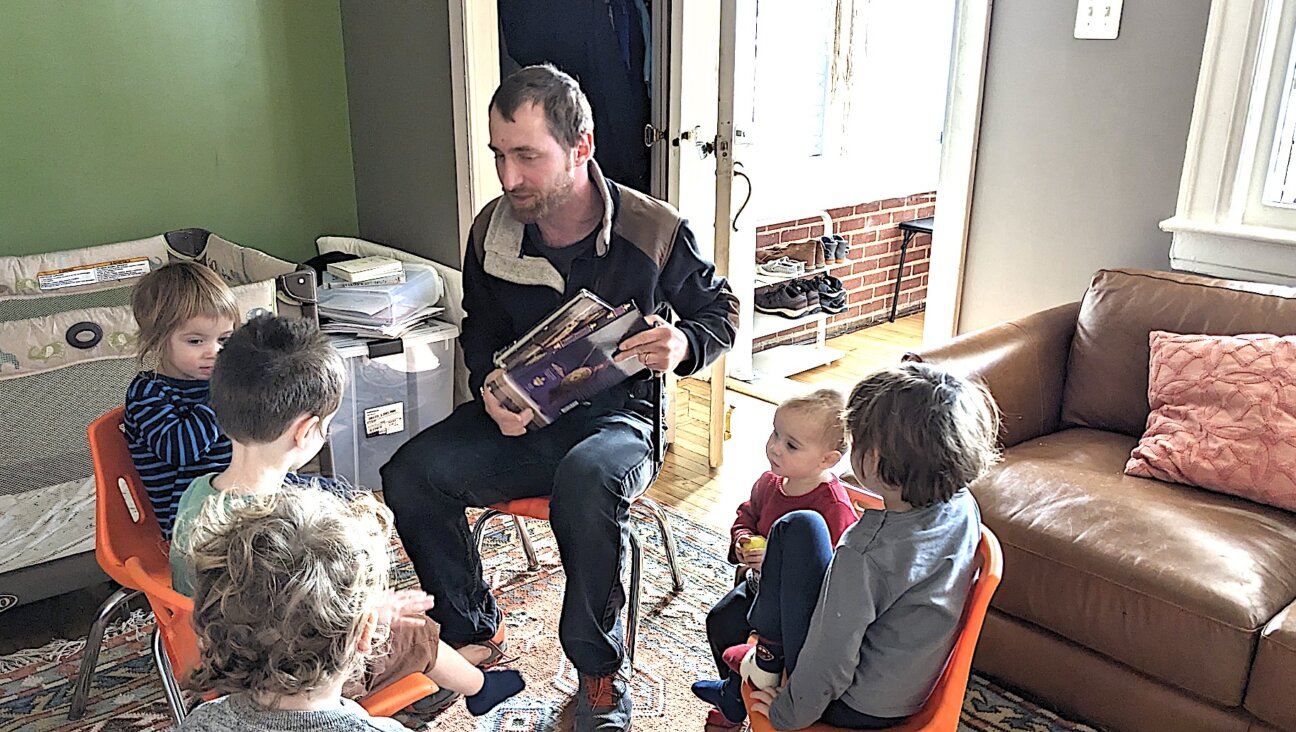Bagels for All — Appreciation or Appropriation?

Image by Lior Zaltzman
It’s been many years since I wrote my last , not since my Orthodox days when I sat behind the mechitzah with the other women during shul. On Shavuot, we read the Book of Ruth and learned how she left her culture and people to follow her mother-in-law back to Israel. Ruth sacrificed everything she knew in order to embrace Judaism and, thus, expanded the definition of who is a Jew.
I may no longer be observant, but parables such as Ruth’s show there is space for everyone, including non-religious me. It’s one of the things I most love about our religion. We can be from anywhere, look like anyone. From the synagogues of Mumbai to the turban wearing kessochs of Ethiopia to the powerful Jewish feminist movement, Judaism is a religion of openness.
Following Ruth’s example, Jewish women continue to carve paths through race, place of birth and gender to amplify the intersection of Judaism and cultural politics. Women like Maralee Gordon sought greater diversity in the Jewish community. “Once we started insisting that women be included in all aspects of the circle of life – ritual, communal leadership, spiritual leadership, theological and philosophical conversation, to name a few – this demand to be included led to the effort to include all those disenfranchised from Jewish life: intermarried families, persons with disabilities, gays and lesbians, singles, the elderly, Jews without money. “How can we include you in the circle?”
Or Loolwa Khazoom who brought multiculturalism into the Jewish discussion. “People already know about Ashkenazi heritage. I am teaching what they do not know. My vision for the Jewish community, however, is Jewish heritage from around the world being taught, honored, and celebrated equally.”
Or Judith Butler’s inclusion of race and queer politics. “Lesbian/gay rights, and the rights of sexual minorities, need to join with feminist, anti-racist, and anti-war movements and are, in many instances, already joined together. There is no bonafide feminism, for instance, that is not also anti-racist. Similarly, there is no struggle for the rights of sexual minorities that is worthy of the name that does not affirm the cultural diversity of sexual minorities.”
Then why do we so rarely see expressions of this vast and beautiful diversity in Jewish culture? Instead, we see pieces of Judaism popping up in odd places, stripped of context.
Think about it. This new trend of non-Jews marrying under the chuppah? Or Christian bar mitzvahs? Or Jean Paul Gaultier’s 1993 line of shtetl inspired fashion? Are these appreciation or appropriation? Amandla Stenberg offered a spot on definition of cultural appropriation. It occurs “when the appropriator is not aware of the deep significance of the culture in which they’re partaking.” .
I rarely hear Jews complain about others appropriating Jewish culture. Most of the time, we’re happy about it, like, we’re just so good everybody wants a piece. Hungry for a bagel? Have it with a schmear. A little Yiddish peppered through your speech for affect? Why not? It’s good for a laugh.
When people use Judaism in this way, they rob it of its intended meaning. These customs, so central to Jewish history and culture, simply cannot have the same significance to non-Jews. Bacon wrapped matzo balls, for example, ignore historical events when pigs and pig fat were used to desecrate homes and temples. It shows a complete lack of respect for Jewishness. When non-Jews separate history from their use of Jewish customs, it’s as if they’re saying “We love Jewish stuff, but we’d prefer it without the actual Jew.”
It is a tricky line, though, because Judaism is not monolithic. So much of Jewish culture has been adopted from the cultures in which Jews have lived. The streimels and long black coats of ultra-Orthodox Brooklyn Jews originated in Eastern Europe. Yiddish, too, melds the languages of Eastern Europe with Hebrew just as Ladino mixes Spanish into Judaism. Ask a Sephardi Jew if she thinks bacon bagels are offensive, and she’ll wonder what in the world bagels have to do with Judaism.
Then why pray tell, do we see so little of the complexity of Judaism? More often than not, we are reduced to the straight white male version.
This is the ultimate in cultural appropriation, because it not only separates Judaism from its roots, it negates huge swathes of living, breathing Jews and instead minimizes us to a big nosed, money grubbing, misogynist male stereotype. He is Woody Allen or Paul Reiser or Jerry Seinfeld. He is awkward, unkempt and while ultimately distasteful, unthreatening, because he’s funny. He often marries a non-Jewish woman, because, you know, Jewish women are ball busters. He is the Ultra-Orthodox man who refused to sit next to a woman on a flight. He is Lena Dunham’s doggy boyfriend. He is Ephraim from New York Magazine’s article about Jews in real estate. And because he is white, he benefits from white privilege, which means it is ok to ridicule him without being called racist. (Macklemore, I’m looking at you.)
Where are the women? Where are the people of color? What about queer Jews? I mean, we exist. Don’t we? Ruth rejected the status quo of her own in order to embrace the new, and in doing so, she set a standard for all Jewish women to follow. I modestly propose we continue to amplify those female voices that seek greater diversity in our community, because as we expand our own awareness and embrace those who have not traditionally been included, we only strengthen ourselves.
















